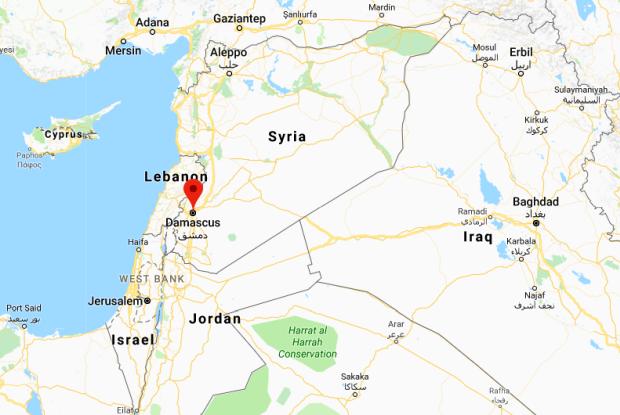Reports: Islamic State surrendering in Syria’s capital

Damascus, the capital of Syria (Image from Google Maps)
BEIRUT — A cease-fire between Syrian government forces and Islamic State militants in the southern neighborhoods of Damascus has held for 24 hours amid reports that some of the fighters have been allowed to leave, a Syrian war monitoring group said Sunday.
The official state news agency and government officials deny reaching a deal to allow the militants to evacuate Yarmouk and adjacent areas. State-run Al-Ikhbariya TV said government forces plan to drive the militants from their remaining strongholds in the area.
The Britain-based Syrian Observatory for Human Rights said buses carrying IS fighters left the Palestinian refugee camp of Yarmouk and the adjacent al-Tadamon neighborhood overnight. A video circulating on social media showed lines of buses waiting in the camp with engines on. It was not clear who filmed the video or where the busses were going.
Damascus residents said the situation was calm, with no warplanes flying overhead Sunday. Al-Watan, a pro-government newspaper, said the militants are believed to have surrendered. The Observatory said IS militants began burning their posts in Yarmouk and adjacent areas. Residents reported smoke was billowing over the area.
The state-run Al-Ikhbariya TV said a new plan is underway to storm IS-held areas in Hajar al-Aswad, near Yarmouk. An al-Ikhbariya reporter in the area said the coming hours will be “decisive” for restoring government control over Hajar al-Aswad, but didn’t mention Yarmouk.
Article continues after this advertisementPresident Bashar Assad’s forces launched an offensive against the militants in southern Damascus a month ago. The offensive has brought more than 70 percent of the camp under government control. The capture of the southern neighborhoods would bring the entire capital under government control for the first time since the war began in 2011.
Article continues after this advertisementYarmouk began as a refugee camp for Palestinians who fled or were expelled from what is now Israel during the 1948 war. On the eve of Syria’s civil war it was a built-up residential area home to tens of thousands of Palestinians and Syrians.
IS has been driven from virtually all the territory it once controlled in Syria and neighboring Iraq, but is still present in remote areas along the border.